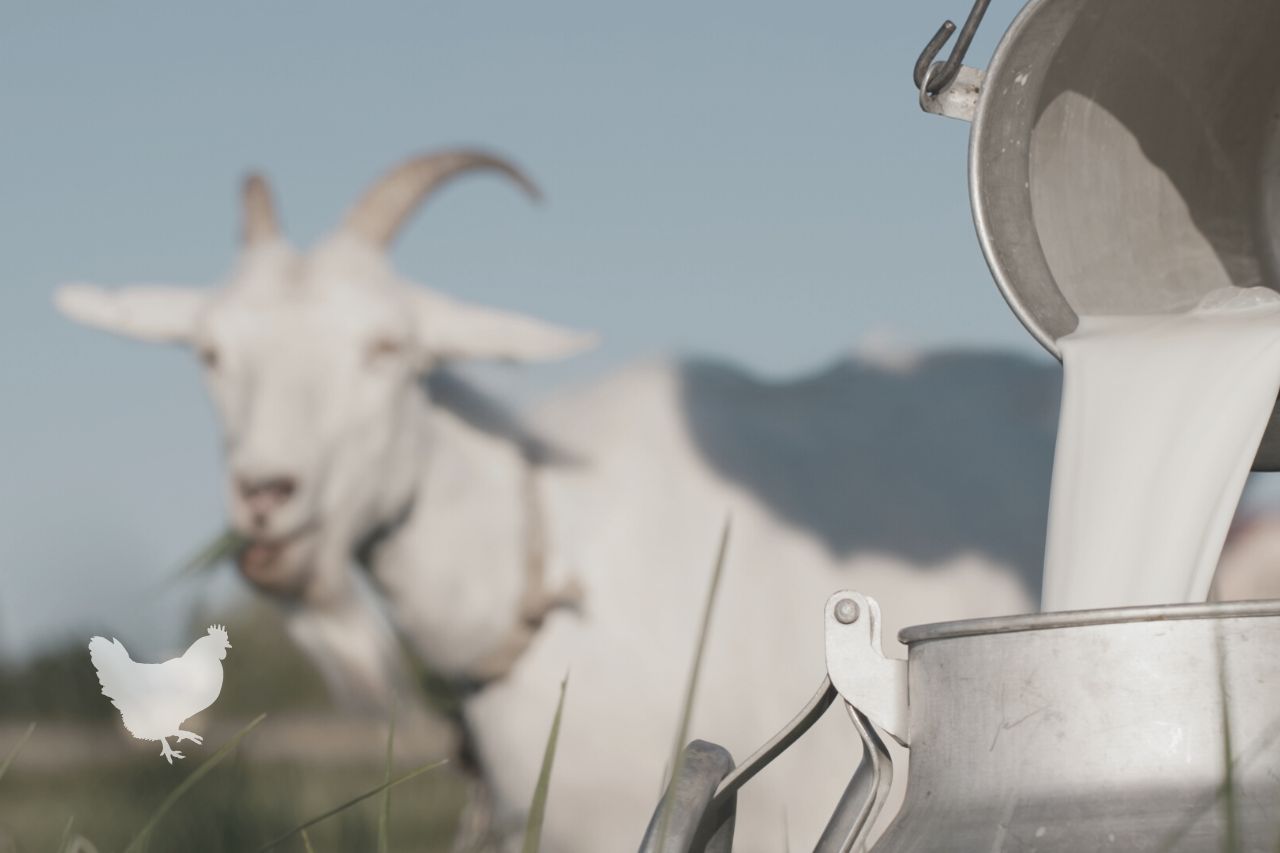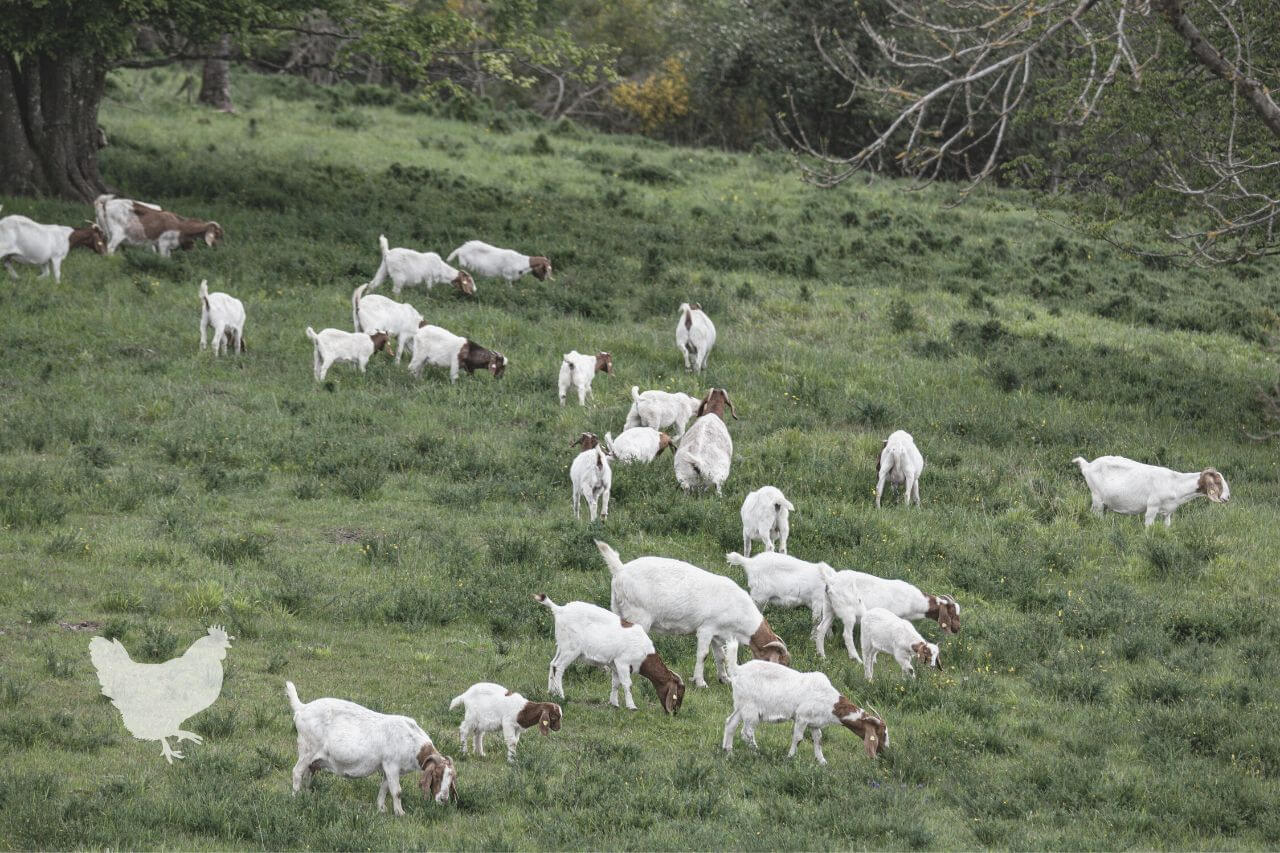One of the best things about keeping goats for milk rather than keeping cows for milk is that goats can do well on all sorts property. Even if you only have a small, rocky, sloping acreage covered in brush, you can keep a few goats for milk. Read on to learn more on how much milk does a goat produce & more.
What You'll Learn Today
How Much Milk Does A Goat Give Per Day?

A healthy female goat (doe) will produce about three quarts of milk a day for ten months out of the year. She will also produce one baby (kid) per year which you can sell, use for meat or raise to produce more milk. You can start milking doe relatively shortly after she has freshened.
Is Goat Milk Good?
Many people think that goat milk has a gamy, musky taste, but this is not always true. You will only have this problem if you keep your own male goat (buck) and you allow him to stay with the herd continuously.
Bucks are very smelly creatures, and their smell can make its way into the milk of the does. If you keep your buck separately, or simply don’t keep a buck at all, the milk your does produce will taste just as fresh and sweet as cows’ milk.
In terms of nutrition, goats’ milk is far better than cows’ milk. It is more nutritious, contains less fat and is easier to digest. There are various ways you can include it in your diet. Have you ever tried goat cheese? It’s delicious!
What If You Don’t Want A Baby Goat Every Year?

If you want goats’ milk, you’ll need to be ready to have a baby goat every year. When the doe gives birth, she naturally produces milk for the baby. The baby will need to nurse for two months and then can be weaned. The doe will continue producing milk for another eight months.
Typically, you’ll breed your doe in the fall, and she’ll have her baby in the springtime. You can milk her for ten months of the year (and potentially use the milk even for an orphaned baby goat).
You’ll need to give her a break two months before the baby is due. During the two months when the baby is nursing, you will only milk once a day.
During this time, you’ll keep the baby separate from the mother during the night. Milk the mother first thing in the morning and then reunite mother and baby. She will still have plenty of milk for the baby. Don’t milk in the evening.
When the baby is weaned, you can milk both morning and evening. After about five months, you’ll notice that your doe’s milk production begins to diminish. Give her a little break until autumn, and then have her bred again.
What Are The Best Kinds Of Goats For Milking?

The classic milk goats are:
- Nigerian Dwarf
- Toggenburg
- La Mancha
- Oberhasli
- Saanen
- Nubian
- Alpine
- Sable
Generally speaking, Nubian goats are said to produce the best milk. They are also rather smallish, so they eat less and need a bit less space. If you are very limited on space, the Nigerian dwarf is a good choice. These little goats produce very smooth, sweet milk with absolutely no musky aftertaste.
How Many Goats Do You Need?
No matter how little milk you need, you need a minimum of two does. This is because goats are very social animals, and they will become very lonely, very bored and very noisy without another goat to keep them company.
As mentioned, you don’t want to keep a buck and a doe together all the time or your milk will be ruined. If you really don’t need the amount of milk you would get from two full-size does, you should choose Nigerian dwarf goats or pygmy goats.
Alternately, you could keep one full-sized doe and keep a wether for company and as a pet. Another alternative would be to keep a donkey, pony, horse, cow or other hoofed animal. Goats can bond with and find companionship with these animals.
How Much Does A Milk Goat Cost?

The price of your milk doe depends on the age and type of goat you choose. If you buy a couple of eight week old does (doelings) you’ll pay the lowest price, but you will need to wait the longest period of time before you are able to start milking.
You may also wish to look for a doe who is slightly older (a junior doe). If you find a young doe who has been bred, you’ll naturally pay a higher price, but you’ll only have a short wait before you can begin milking.
Another great way to start your herd is to look for a senior doe who is already in milk. If you find a breeder who is reducing herd size, you may get lucky and find just the established doe you want at a good price. She may even be bred.
It’s hard to say exactly how much you’ll spend for any of these choices because a great deal depends upon the type of goat you’re looking at and the pedigree. A good milking doe without a pedigree might be quite a bit less expensive than an eight week old doeling with a fine pedigree.
When choosing the milk goat you want, be sure you know what you’re looking at. Learn how to judge a goat’s health and temperament upon examination.
You want a goat who is in good condition with no injuries or observable physical problems, bright eyes and a friendly and inquisitive temperament. Don’t accept a goat who seems to be ill tempered as you will have a difficult time milking her!
How To Milk A Goat
Frequently Asked Questions
Good food handling practices are key to goat milk safety. Milk of any kind that has not been pasteurized may contain salmonella, E. coli, S. aureus and other types of bacteria. There is also evidence that goat milk that has not been pasteurized can transmit tick borne encephalitis to humans.
You must heat the raw milk to a temperature of 150°F and maintain that temperature for a minimum of half an hour. Alternatively, you can heat it to a temperature of 162°F and maintain that temperature for fifteen seconds. Either way, if the temperature drops at all before the time is up, you must restart your timer. It is very important to maintain the desired high temperature consistently for the prescribed amount of time.
The flavor of goats’ milk is dependent upon the breed of goat giving the milk, the goats’ diet and the amount of butterfat in the milk. La Manchas and Nubians typically give sweeter milk. Oberhaslis and Toggenburgs typically give fairly strong tasting milk. Nigerian Dwarf goats give sweet, thick milk that is more like cream. Saanens give mild, thin milk that is more like 2% or skim milk. The milk of Alpine goats can vary a great deal from one doe to another.
If you want consistent flavor in your goats’ milk, it’s a good idea to control feed consumption. Avoid allowing your goat to free range in areas where she may eat all sorts of weeds. Instead, keep her on good pasture and feed high quality legume (clover or alfalfa) hay.
Goat milk is excellent for baking because it generally conveys more health benefits than cows’ milk, and it has a sweet taste that adds richness and fullness to baked goods.
There are 5 people in my family, and and we’ve got enough milk for the last 3 years with only Dolly, out goat.